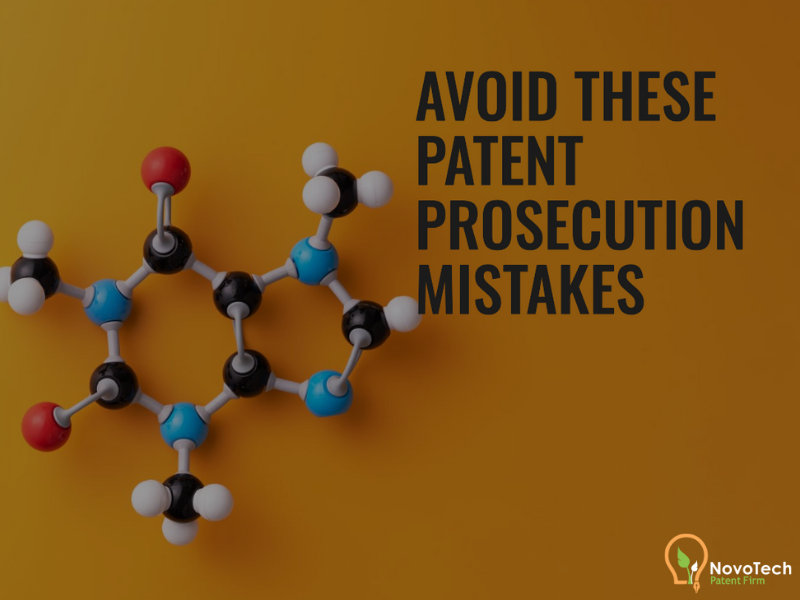
Common Mistakes to Avoid in Patent Prosecution
Authored by Babak Akhlaghi on October 2, 2024. Navigating the patent prosecution process can be a complex task. It’s a journey filled with potential pitfalls that can derail your patent application.
Understanding these common mistakes is crucial. It can help inventors, startups, and businesses secure their patent rights effectively.
In this article, we’ll explore these common mistakes in patent prosecution. We’ll provide actionable advice to help you avoid them.
Whether you’re an inventor, a patent attorney, or involved in the patent application process, this guide will be beneficial. Let’s dive into the world of patent prosecution and learn how to navigate it successfully.
What is Patent Prosecution
Patent prosecution refers to the process of arguing for the grant of a patent. It’s a dialogue between the applicant and the patent office.
This process is distinct from patent litigation, which involves legal disputes over patent infringement.
A successful patent prosecution requires a deep understanding of patent law, the specific requirements of the patent office, and exceptional negotiation skills.
The Role of a Patent Prosecution Attorney
A patent attorney plays a crucial role in the patent application process. They guide inventors through the complex legal landscape.
Their tasks include drafting patent applications, responding to patent office actions, and advising on patentability. They also help in formulating a robust patent strategy.
Their expertise can significantly increase the chances of a successful patent grant.
Prior Art Searches: A Valuable Consideration
While conducting a prior art search is not mandatory, it is a beneficial step in the patent prosecution process. This search helps identify existing patents or publications similar to your invention, providing valuable insights.
Choosing not to conduct a prior art search might increase the risk of patent infringement and could lead to the rejection of your patent application.
Although optional, investing time and resources in a comprehensive search can be advantageous. It has the potential to prevent future legal issues and contribute to a smoother patent prosecution journey.
Drafting Patent Claims with Precision
Drafting clear and precise patent claims is crucial. Ambiguous claims can lead to misunderstandings and potential rejections.
Avoid overly broad or narrow claims. They can lead to patent invalidity or limit the scope of protection.
Remember, your patent claims define the boundaries of your invention. Make them count.
Navigating Patentability Requirements
Understanding patentability requirements is key. These include novelty, non-obviousness, and utility.
Neglecting these requirements can lead to patent rejection. Ensure your invention meets all these criteria.
Remember, a well-informed inventor is a successful inventor. Stay informed and avoid common pitfalls.
Unlock Patent Success: Strategic Examiner Interviews Matter
I’ve always been a fan of interviews with Examiners—they’re great for expediting patent prosecution and breaking down barriers. At our firm, we try to interview every case.
Since the pandemic, most have been over the phone, but I recently had the chance to do an in-person interview. It was a powerful reminder of their effectiveness.
Sitting face-to-face allows for deeper discussions, and you can often tell from the Examiner’s reactions whether your arguments are hitting the mark or need more work.
While not every case requires an in-person interview, they’re definitely worth considering for important cases with challenging issues like 101, which is a tough area for patent attorneys, examiners, and judges alike.
Timely Responses to Patent Office Actions
Responding to patent office actions in a timely manner is crucial. Delays can lead to application abandonment.
Ensure you meet all deadlines. This will keep your patent prosecution process on track.
The Perils of Public Disclosure Before Filing
Public disclosure of your invention before filing can be risky. It may jeopardize your patent rights.
Always file your patent application first. This ensures your invention is protected.
Avoiding DIY Patent Applications
Patent applications are complex. It’s not advisable to do it yourself without legal help.
Professional assistance can prevent costly mistakes. It ensures a smoother patent prosecution process.
Conclusion: Ensuring a Smooth Patent Prosecution Process
Avoiding common mistakes can streamline your patent prosecution, protecting your invention effectively and efficiently.
Stay Informed with Expert Insights!
Want more valuable tips on navigating patent law and protecting your intellectual property? Join our free weekly newsletter for the latest updates, expert advice, and exclusive content straight to your inbox. Subscribe today and never miss out on essential information that can make all the difference in your patent journey! Subscribe to our Newsletter
